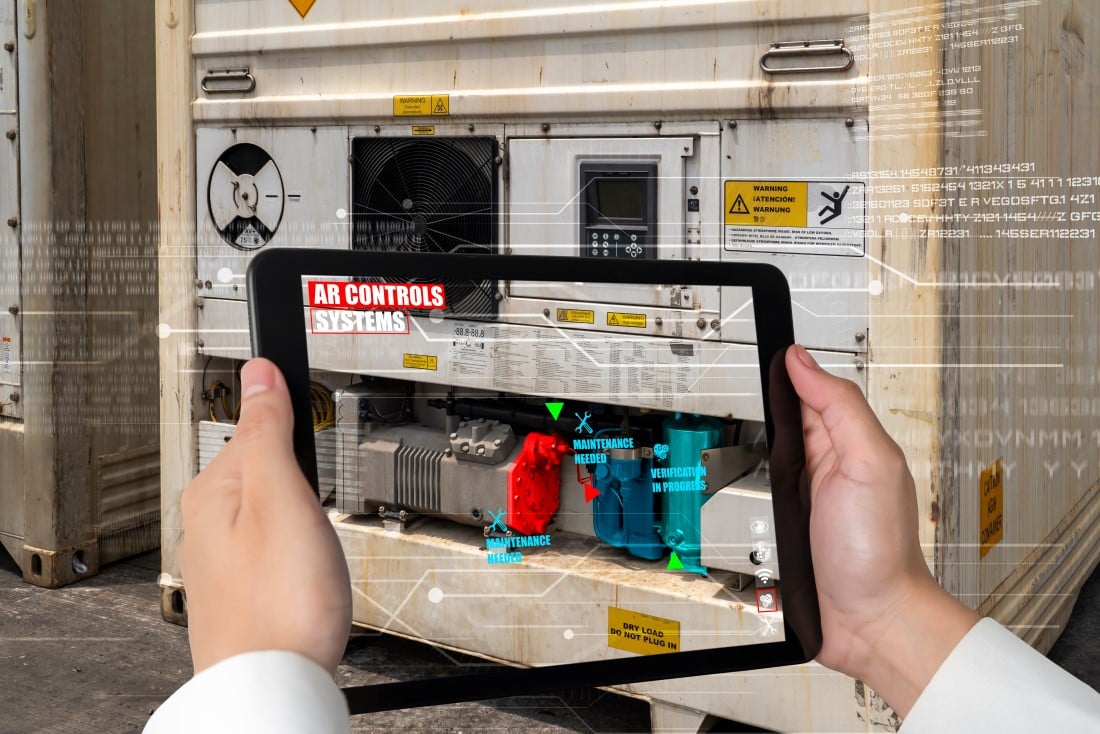Top 5 Field Service Trends in 2021
Note: See our newer post, Top Field Service Management Technology Trends for 2024. In 2020, field service companies were tasked with the unique...

Staying up to date with industry best practices is critical to maintaining a competitive advantage and satisfying customers. However, with the pandemic dramatically disrupting the field service industry, pre-pandemic best practices need to be modified to satisfy pandemic expectations. This means that field service companies need to adapt to the new industry best practices that customers not only expect for a seamless customer experience now but also a safe one.
This post will outline the four new field service best practices that have emerged from the COVID-19 pandemic and the direct benefits associated with each one.
1. Touchless Service via Remote Support
Prior to the pandemic, it was considered a best practice for Property & Casualty (P&C) insurance adjusters and home repair technicians to travel in-person to a customer’s location to provide support. This included assessing and appraising damage in person, as well as physically repairing customer’s equipment for them. At the time this in-person service was expected, and a customer might even feel neglected if an adjuster or a technician did not appear in person and instead relegated these tasks for a customer to perform on their own.
However, with the heightened health risks of in-person interactions during the pandemic, this attitude has completely changed. Now customers are increasingly reluctant to let adjusters or technicians into their homes, which has fostered a sense of willingness and even excitement to embrace remote service.
Field service companies can facilitate remote service using Augmented Reality (AR) technology. AR goes beyond a phone call, enabling the customer and expert to share in a collaborative visual experience. Introducing this visual element has greatly improved the usability and acceptance of remote service by customers, establishing a new best practice that doesn’t look like it’s going anywhere. In fact, field service companies also benefit from adopting remote support by eliminating travel time and expenses, improving productivity, and minimizing time to payment.
2. Dynamic SchedulingWhen remote support is not an option and technicians must resolve an issue in person, ensuring appointment accuracy and efficiency will now be more important than ever. Prior to the pandemic, there was less emphasis on the exact timing of an appointment or the duration of the service job itself. While it was a slight nuisance for a technician to take longer than expected to repair an issue, the sustained time in a customer's house was not necessarily a direct threat to a customer’s health. With the onset of the pandemic, this has changed.
Likewise, customers want to know the exact minute that a technician will first arrive, and are eager to get technicians out of their bubbles as quickly as possible. This heightened emphasis on timeliness and efficiency has increased the demand for dynamic scheduling.
Dynamic scheduling leverages Artificial Intelligence (AI), configurable business-driven constraints, and field service mobility. By adopting this new best practice, field service companies can improve appointment accuracy, increase the efficiency of service jobs, and enhance the customer experience. For instance, ServicePower’s Intelligent Scheduling Software has helped customers improve their Net Promoter Score (NPS) by 27% and also increase jobs completed per day by 45%. With greater service efficiency, increased profits, and happier customers, field service companies have every reason to adopt this new best practice.
3. Blended WorkforceLike many industries in the U.S., the field service industry has been experiencing a labor shortage over the last few years. With numerous full-time employees reaching retirement age, there has been a “graying of the workforce.” Combined with fewer young people choosing to work in the field service industry, this has resulted in a reduced number of new full-time employees in the industry. This phenomenon was already occurring before the COVID-19 pandemic, but the challenges of the pandemic have exacerbated it even further.
With unpredictable absences due to sickness, quarantines, and travel bans, the field service industry lost the ability to rely on full-time employees for continuous and uninterrupted scheduling during the pandemic. However, this is exactly when customers have needed reliable service; people are spending more time at home than ever before, and creating additional strain on a variety of home services and appliances.
That’s where a blended workforce comes in. By dispatching both contracted and employed technicians, there is a notably larger labor pool to pull from. Scaling supply as needed to meet the fluctuating demand for services, field service companies can rest assured that every customer will be serviced in a timely manner. Even more, 49% of companies that utilized freelance workers have reported a positive impact on performance. This not only pleases customers but also saves companies time and money that would otherwise be wasted on lower quality or repeat services.
4. Virtual PaymentsPrior to the pandemic, customers were comfortable with signing invoices or handing over payments in person. This was a normal interaction that didn’t add undue friction to the customer experience. That is no longer the case.
Now customers do not want to touch communal pens or papers, rendering paper invoices, and payments a large source of friction in the customer experience. By providing a touchless or virtual payment method, field service companies can foster a seamless customer experience that eliminates any worry about virus transmission. A self-service customer portal is the best way to facilitate virtual payments, enabling customers to choose their own payment method including credit, debit, and mobile wallets. With access to an empowering touchless payment experience, customers will never want to go through the trouble of an in-person paper invoice again.
In addition to pleasing customers, virtual payments make technicians' lives easier as well. With a digital payment solution, companies can electronically deliver paychecks to contingent workers and independent contractors.
Summary
Staying competitive in the field service industry requires agility and the ability to adopt new best practices and industry trends. The pandemic has expedited transformation within the industry, and field service companies need to start adopting these new best practices:
Successfully adopting these new field service management best practices requires advanced field service software.
ServicePower’s Intelligent Field Service Management Suite is the only software on the market that is able to seamlessly service a blended workforce, experience it for yourself.

Note: See our newer post, Top Field Service Management Technology Trends for 2024. In 2020, field service companies were tasked with the unique...

Augmented Reality is increasingly being adopted across the field service industry. With customers demanding better remote self-service options, and...

Remote field service became an integral part of field service in 2020, but it looks like that trend may be here to stay after the first quarter of...